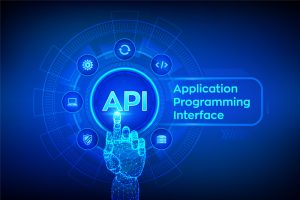Marketing across different languages used to mean expensive translators and lengthy delays. Not anymore. The AI in language translation market grew from $1.88 billion in 2023 to $2.34 billion in 2024, representing a compound annual growth rate of 24.9%.This explosive growth tells us something important,businesses are finally finding solutions that actually work.
Smart marketers are actively using these tools to reach customers who speak different languages. The days of limiting your campaigns to English-only audiences are quickly becoming history.
The Digital Revolution in Translation Technology
Modern businesses can’t afford to ignore non-English speaking customers. Traditional translation methods often took weeks and cost thousands of dollars for even simple marketing campaigns.
Whether you’re testing ads in Tokyo or optimizing SEO in Spain, an international eSIM ensures you’re always connected, allowing AI tools to deliver real-time insights and translations without delay. As digital marketing becomes increasingly global, the combination of AI and international eSIM technology empowers marketers to operate without borders.
Real-Time Translation Capabilities
Language translation technology has evolved far beyond basic word-for-word conversion. Today’s AI systems understand context, cultural nuances, and industry-specific terminology. They can translate social media posts, email campaigns, and website content in seconds rather than days.
Travel companies particularly benefit from these advances. When customers need connectivity abroad, international esim services can instantly provide information in multiple languages. This technology eliminates the frustration of language barriers during crucial purchase decisions.
Machine Learning Improvements
AI systems learn from every translation they process. They’re constantly getting better at understanding slang, idioms, and regional expressions. This means your marketing messages don’t just get translated they get localized for each specific audience.
The improvement cycle never stops. Each successful translation teaches the system something new about language patterns and cultural preferences.
Breaking Down Communication Barriers
Breaking language barriers isn’t just about translation anymore. It’s about creating genuine connections with customers who speak different languages.
Cultural Context Understanding
Modern AI doesn’t just translate words,it adapts entire marketing messages for different cultures. A joke that works in American English might fall flat in Japanese, but AI can now recognize these cultural differences and adjust accordingly.
Smart marketers are using this capability to create campaigns that feel native to each market. Instead of obvious translations, customers receive content that feels like it was created specifically for them.
Real-Time Customer Support
Live chat features powered by AI translation allow customer service teams to help customers in dozens of languages simultaneously. This capability transforms customer experience from a potential frustration into a competitive advantage.
Companies report significant improvements in customer satisfaction when they can communicate directly in the customer’s preferred language.
SEO Benefits Across Languages
AI and SEO work together to help businesses rank in search results across multiple countries and languages. This combination opens up entirely new markets that were previously inaccessible.
Keyword Research in Multiple Languages
AI tools can identify high-value keywords in different languages and help create content that ranks well in local search results. This goes beyond simple translation,it’s about understanding how people actually search for products in different countries.
Local search patterns vary dramatically between cultures. What Americans search for might be completely different from what Europeans or Asians type into search engines.
Content Optimization for Global Markets
Search engines favor content that feels natural and valuable to local audiences. AI helps create this type of content by understanding local search behaviors and preferences.
The result? Marketing campaigns that don’t just reach international audiences,they actually convert them into customers.
Strategic Implementation for Global Reach
International marketing strategies now rely heavily on AI translation tools to scale efficiently across multiple markets simultaneously.
Campaign Localization at Scale
Large companies can now launch campaigns in 20+ languages without hiring separate teams for each market. AI handles the initial translation and localization, while human experts make final adjustments.
This approach reduces costs by 70-80% compared to traditional methods while maintaining quality standards that actually connect with local audiences.
Social Media Management
Managing social media accounts in multiple languages used to require dedicated teams for each market. AI translation tools now allow single teams to manage global social media presence effectively.
Response times improve dramatically when customer comments can be understood and answered in real-time, regardless of language.
Comparison: Traditional vs. AI Translation Methods:
Traditional translation offers human nuance but takes days and costs more. In contrast, AI translation delivers consistent, culturally aware results in minutes, at a fraction of the price. It scales effortlessly, supports real-time needs, and operates 24/7, making it ideal for businesses with global demands.
| Aspect | Traditional Translation | AI Translation |
| Speed | 2-5 days per project | Minutes to hours |
| Consistency | Varies by translator | Consistent quality |
| Cultural Adaptation | Depends on translator knowledge | Built-in cultural understanding |
| Scalability | Limited by human resources | Virtually unlimited |
| Real-time Support | Not feasible | Available 24/7 |
Technology Integration Options
Companies have several ways to integrate AI translation into their existing marketing workflows.
API Integration
Marketing platforms can connect directly to AI translation services through APIs. This allows automatic translation of content as it’s created, streamlining the entire process.
Teams report saving 15-20 hours per week on translation tasks after implementing these integrations.
Standalone Translation Tools
Some businesses prefer dedicated translation platforms that offer more control and customization options. These tools often provide better results for complex marketing materials.
Hybrid Approaches
Many successful companies combine AI translation with human oversight. AI handles the initial translation, while human experts review and refine the results for cultural accuracy.
This approach balances efficiency with quality, ensuring marketing messages maintain their intended impact across different languages.
Measuring Success Across Markets
Tracking performance becomes more complex when campaigns run in multiple languages, but AI tools are transforming how marketers tackle this challenge.
Analytics and Reporting
Modern analytics platforms equipped with AI can track engagement metrics, like click-through rates, bounce rates, and time on page, across various languages and cultures. These insights help marketers determine which messages resonate best with specific audiences. AI-powered sentiment analysis can also gauge emotional responses, offering a deeper understanding of how content is perceived in different regions.
Conversion Tracking
AI doesn’t just translate content, it also tracks which translated versions drive the most conversions. By analyzing patterns in customer behavior, AI can identify what language style, tone, or call-to-action is most effective in each market. This empowers marketers to continuously optimize their campaigns for higher ROI.
Real-Time Adaptation
With the help of AI and tools like an international eSIM, marketers can monitor and adapt global campaigns on the go. An international eSIM ensures uninterrupted connectivity, allowing for instant access to dashboards and reports while traveling or managing campaigns across time zones. Whether you’re analyzing performance in Paris or tweaking content in Tokyo, having an international eSIM keeps marketers online and responsive.
Region-Specific Insights
Performance data from international campaigns often reveals surprising trends—such as a product performing well in unexpected regions or certain messages resonating more strongly in one culture than another. AI can highlight these anomalies and recommend data-driven adjustments, helping brands refine their international strategies with precision.
Your Questions About AI Translation Answered
How does AI affect language and communication?
AI helps people communicate more quickly and improves interpersonal perceptions in everyday conversation, but findings caution that these benefits come with alterations to emotional aspects of language.
How will AI affect language learning?
AI-driven speech recognition mimics various accents by analyzing extensive audio data, helping learners grasp different dialects better and accurately imitate real language patterns in their speech.
Can AI translation handle marketing creativity?
Yes, modern AI understands context and cultural nuances well enough to adapt creative marketing messages, though human oversight remains valuable for brand-critical communications.






